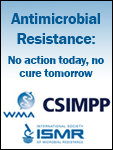
Antimicrobial Drug Resistance (AMDR)
|
Please complete the following questionnaire before continuing.
Antimicrobial Drug Resistance (AMDR) |

|
Please complete the following questionnaire before continuing.
Antimicrobial Drug Resistance (AMDR) |